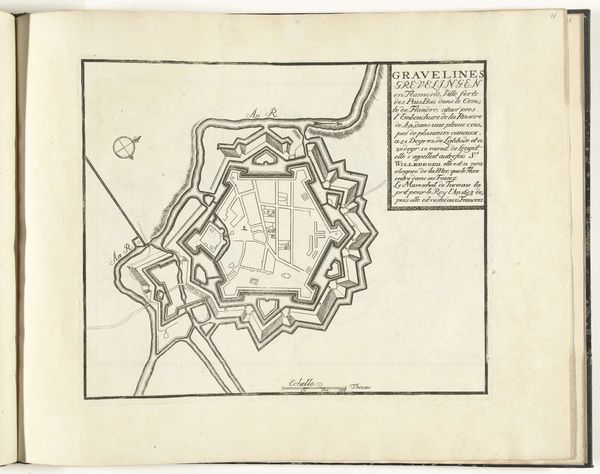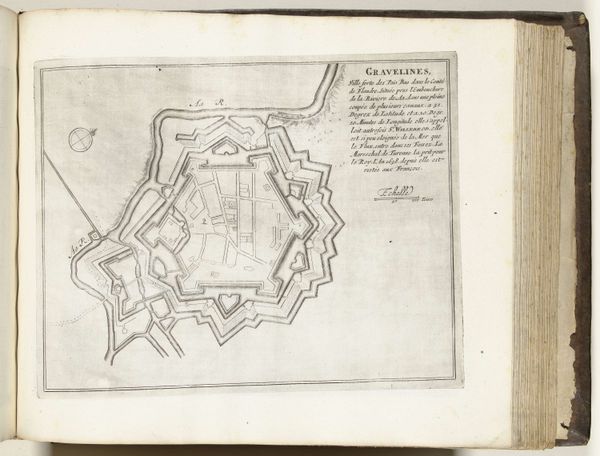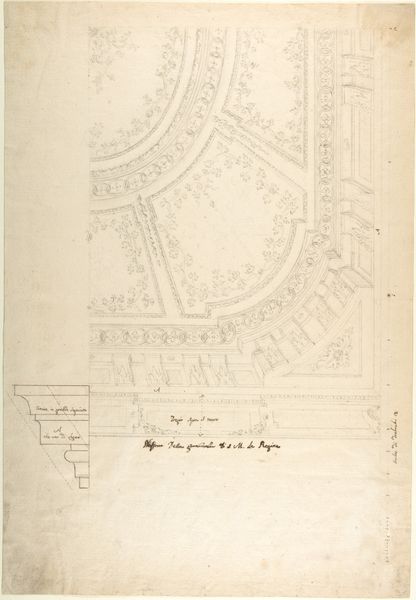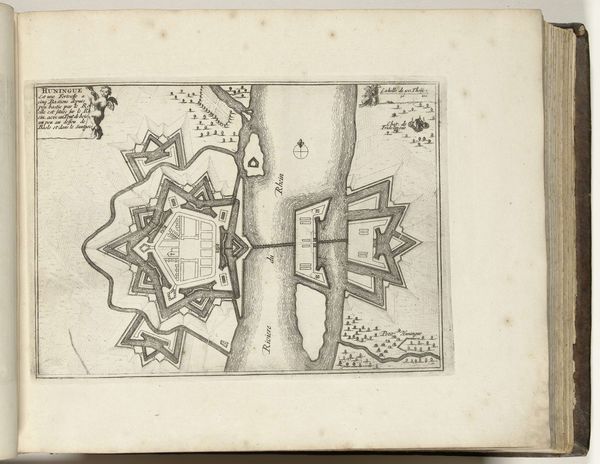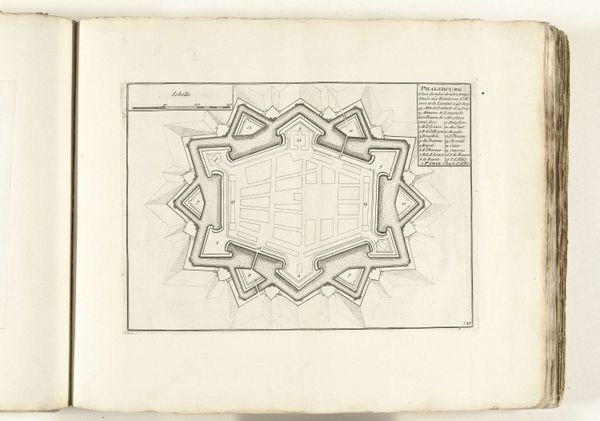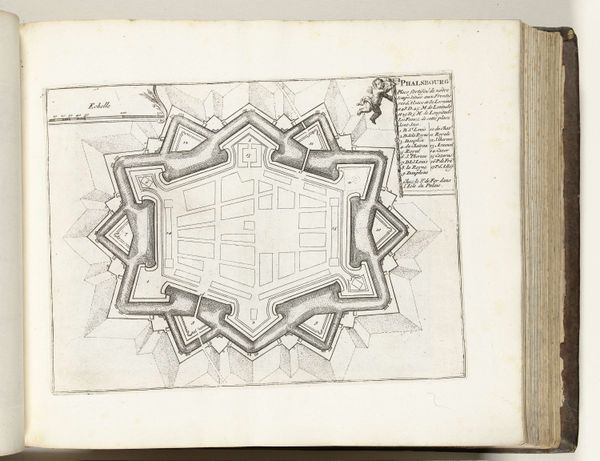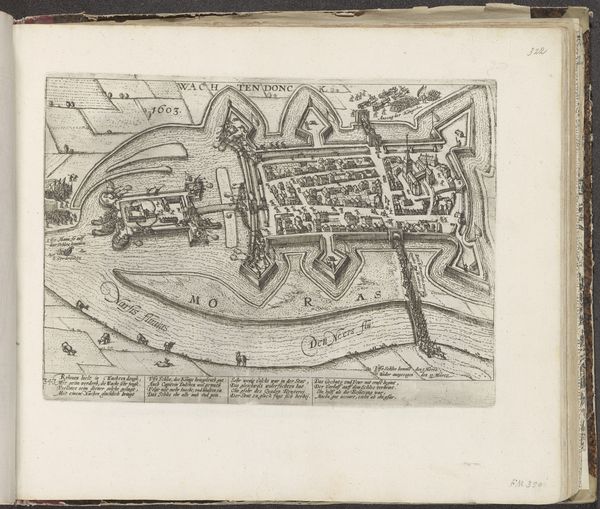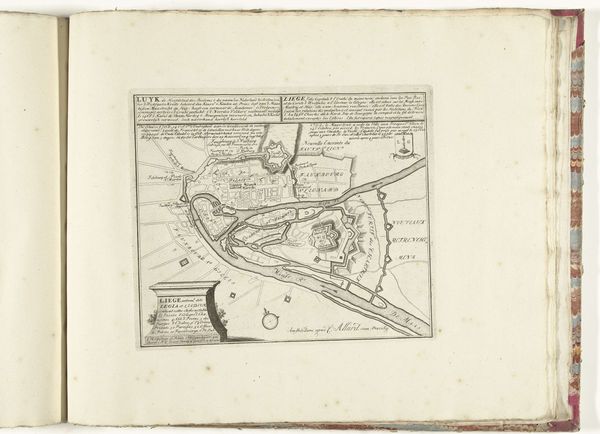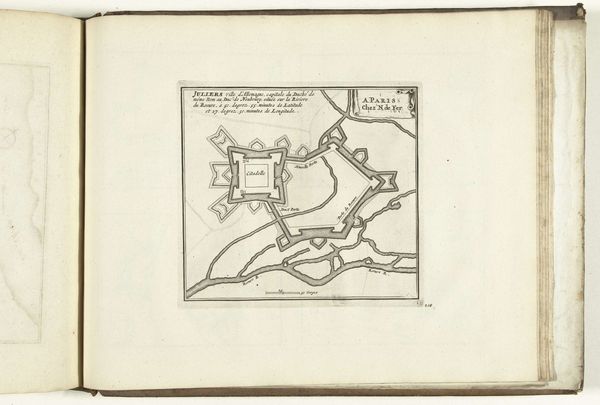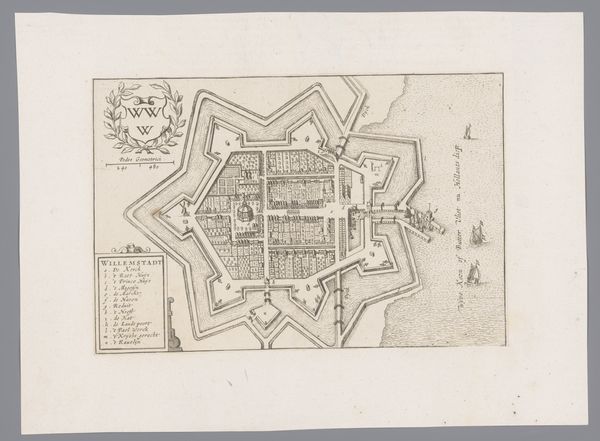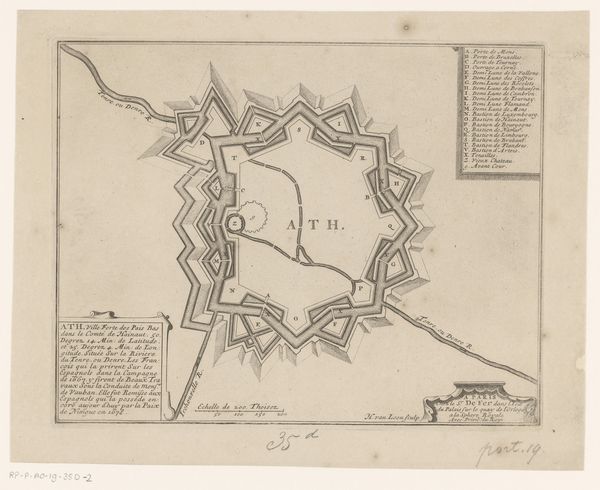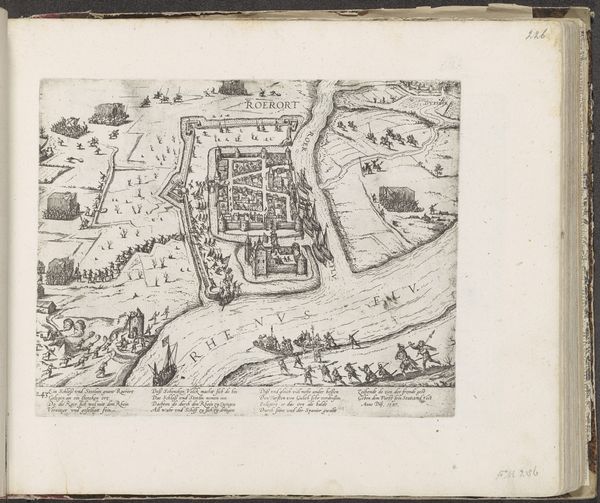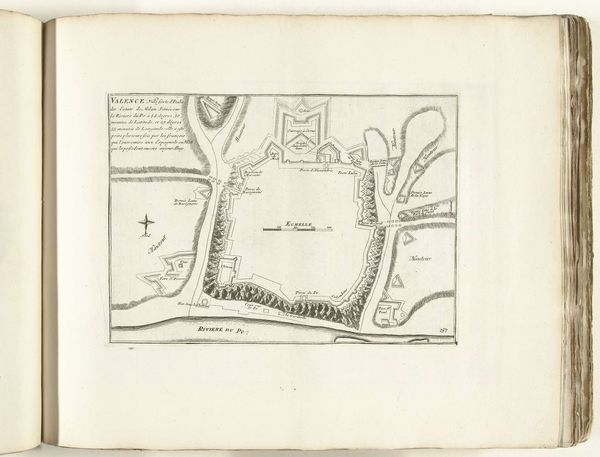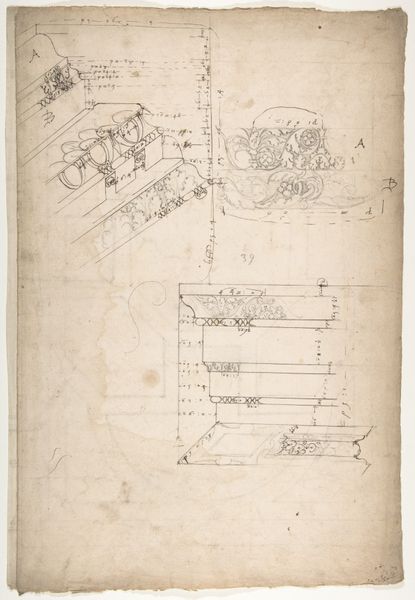
drawing, print, etching, paper, ink
#
drawing
#
baroque
# print
#
etching
#
etching
#
paper
#
form
#
ink
#
geometric
#
line
#
decorative-art
Dimensions: 10 x 14-1/2 in
Copyright: Public Domain
Curator: This delicate ink and etching print, “Two Arabesque Designs for Ceilings,” offers a fascinating glimpse into 18th-century interior design. It comes to us anonymously and is now held at the Metropolitan Museum of Art. Editor: It’s like looking at a secret map, maybe leading to the heart of Baroque opulence! The fine lines create these elaborate geometric shapes, softened with flowing floral patterns… it makes me think of elaborate sugar sculptures. Curator: Precisely. The Arabesque style, with its rhythmic linear patterns of scrolling and interlacing foliage, was central to the decorative arts during the Baroque period. These designs reflect a period enamored with ornamentation and elaborate architectural flourishes. It's interesting to view such designs and to reflect upon the power dynamics such ornamentation can reinforce or question. Editor: Absolutely. I’m curious about the ceilings these were meant for. High ceilings, naturally, implying wealth and status, maybe the kind where you could get lost just gazing up from a chaise lounge while servants whispered nearby. Curator: I agree that wealth is implied through luxury. Considering the era, these designs were undoubtedly intended for elite patrons. We need to question who would have benefited from these aesthetics, and whose labor would be involved in creating these spaces. Where does the artist fit within these social structures? Editor: It's a paradox, isn’t it? This visual feast, born of complex social hierarchies. The beauty distracts from that sometimes. It feels poignant and somehow tragic to understand a system supported its own subjugation via creative talent. I guess the same thing is still true today. Curator: Indeed, this piece invites us to contemplate how class is materially and culturally constructed. How did decorative art influence people's daily lives, their sense of self, their worldview, and what can we learn from its history? Editor: For me, this arabesque unlocks stories within stories. Every delicate curve hides a truth, urging us to consider what opulence really means and the questions it begs. It’s kind of like unlocking someone’s diary.
Comments
No comments
Be the first to comment and join the conversation on the ultimate creative platform.
